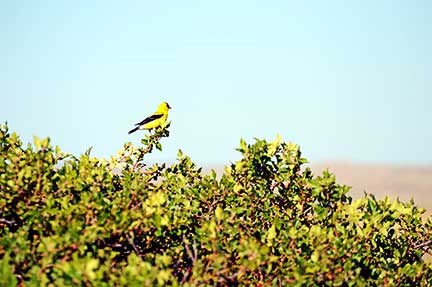|
Never Feed Wildlife It is important to dispose of all garbage-even your crumbs properly. Wildlife that begins to depend on human food loses their ability to forage for themselves. They may also lose their natural fear of humans and can become overly aggressive and sick. Please, for your safety and theirs, never let a wild animal eat your food. 
NPS S.Smith Ethical Wildlife Viewing All wildlife in national park sites are protected by federal law. Wildlife behaviors for survival are disturbed when approached at an unsafe distance. You are too close to an animal if your presence causes them to move. Repeated encounters with people can have negative, long-term impacts on wildlife, including avoidance of essential feeding areas. Seemingly tame animals are still wild, and behave unpredictably. By appreciating wildlife from a distance, you are helping to keep wildlife wild, and protecting your safety as well as theirs. Here are a few tips on how to be a responsible wildlife observer listed below: ·Use binoculars, spotting scopes or long camera lenses for close views and photographs. ·Maintain a safe distance of at least 25 yards from all wildlife. ·Never position yourself between an adult and its offspring. Females with young are especially defensive. ·Nesting birds are easily disturbed. If an adult bird on a nest flies off at your approach, or circles you or screams in alarm, you are too close to the nest. Unattended nestlings cannot fend off predators and face exposure. ·Allow other visitors a chance to enjoy wildlife. If your actions cause an animal to flee, you have deprived other visitors of a viewing opportunity. 
NPS S. Smith Horse Viewing Etiquette Use extra care when driving along the tour road, not only for your safety, but also for the safety of the horses you might encounter.A portion of the tour road passes through private property where privately owned horses are able to graze freely. If you see horses on or next to the road, slow down and take your time maneuvering around them. Avoid parking or standing in the path that the horses need to get off of the road.If the horses feel cornered, they may bolt into oncoming traffic. When horses are a safe distance from the road, then please observe/photograph them using the same etiquette that applies to wildlife: Do NOT … ·chase ·disturb ·feed ·harass ·harm ·touch
|
Last updated: April 23, 2025
